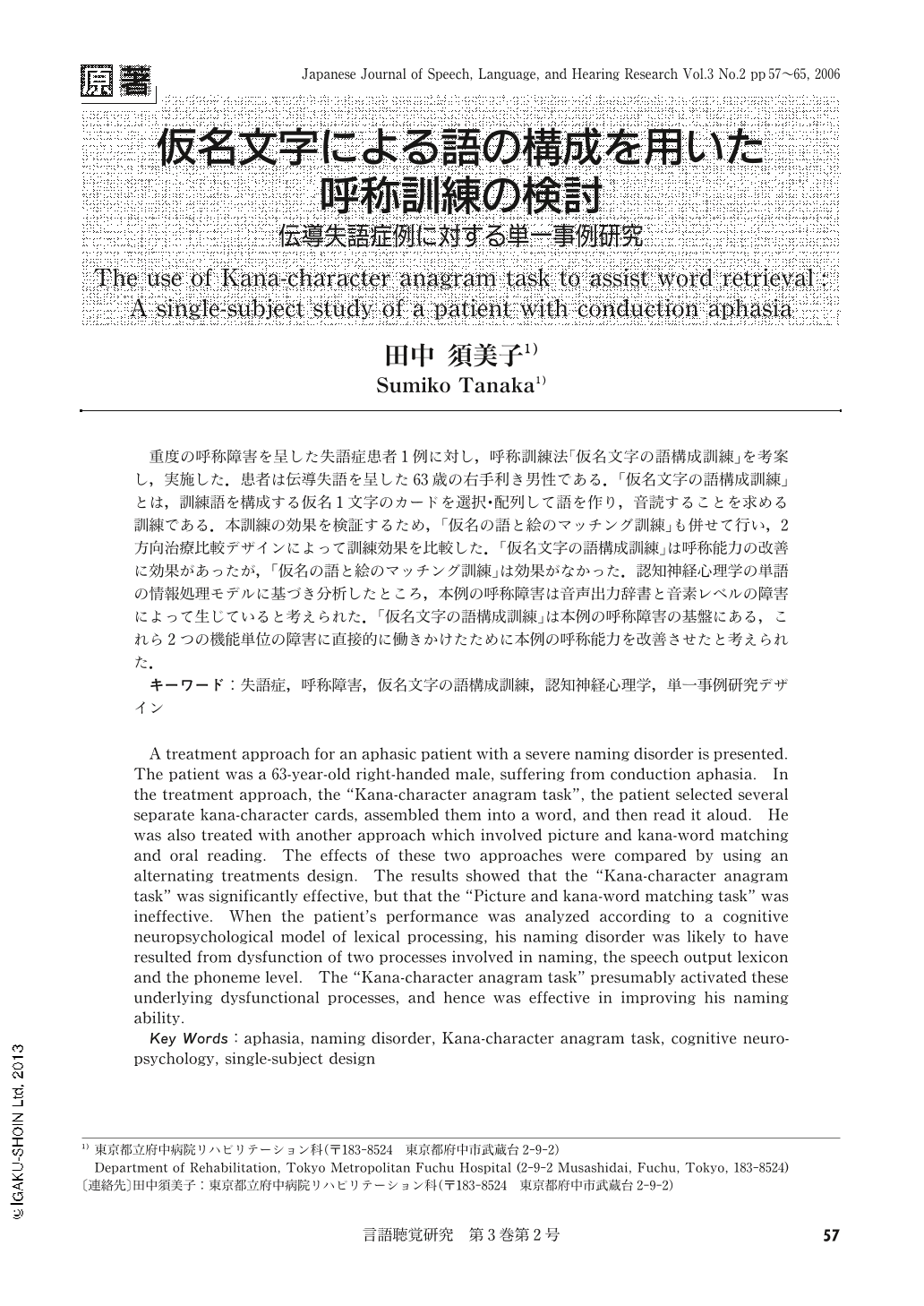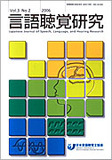Japanese
English
- 有料閲覧
- Abstract 文献概要
- 1ページ目 Look Inside
- 参考文献 Reference
- サイト内被引用 Cited by
重度の呼称障害を呈した失語症患者1例に対し,呼称訓練法「仮名文字の語構成訓練」を考案し,実施した.患者は伝導失語を呈した63歳の右手利き男性である.「仮名文字の語構成訓練」とは,訓練語を構成する仮名1文字のカードを選択・配列して語を作り,音読することを求める訓練である.本訓練の効果を検証するため,「仮名の語と絵のマッチング訓練」も併せて行い,2方向治療比較デザインによって訓練効果を比較した.「仮名文字の語構成訓練」は呼称能力の改善に効果があったが,「仮名の語と絵のマッチング訓練」は効果がなかった.認知神経心理学の単語の情報処理モデルに基づき分析したところ,本例の呼称障害は音声出力辞書と音素レベルの障害によって生じていると考えられた.「仮名文字の語構成訓練」は本例の呼称障害の基盤にある,これら2つの機能単位の障害に直接的に働きかけたために本例の呼称能力を改善させたと考えられた.
A treatment approach for an aphasic patient with a severe naming disorder is presented. The patient was a 63-year-old right-handed male, suffering from conduction aphasia. In the treatment approach, the "Kana-character anagram task", the patient selected several separate kana-character cards, assembled them into a word, and then read it aloud. He was also treated with another approach which involved picture and kana-word matching and oral reading. The effects of these two approaches were compared by using an alternating treatments design. The results showed that the "Kana-character anagram task" was significantly effective, but that the "Picture and kana-word matching task" was ineffective. When the patient's performance was analyzed according to a cognitive neuropsychological model of lexical processing, his naming disorder was likely to have resulted from dysfunction of two processes involved in naming, the speech output lexicon and the phoneme level. The "Kana-character anagram task" presumably activated these underlying dysfunctional processes, and hence was effective in improving his naming ability.

Copyright © 2006, Japanese Association of Speech-Language-Hearing Therapists. All rights reserved.


